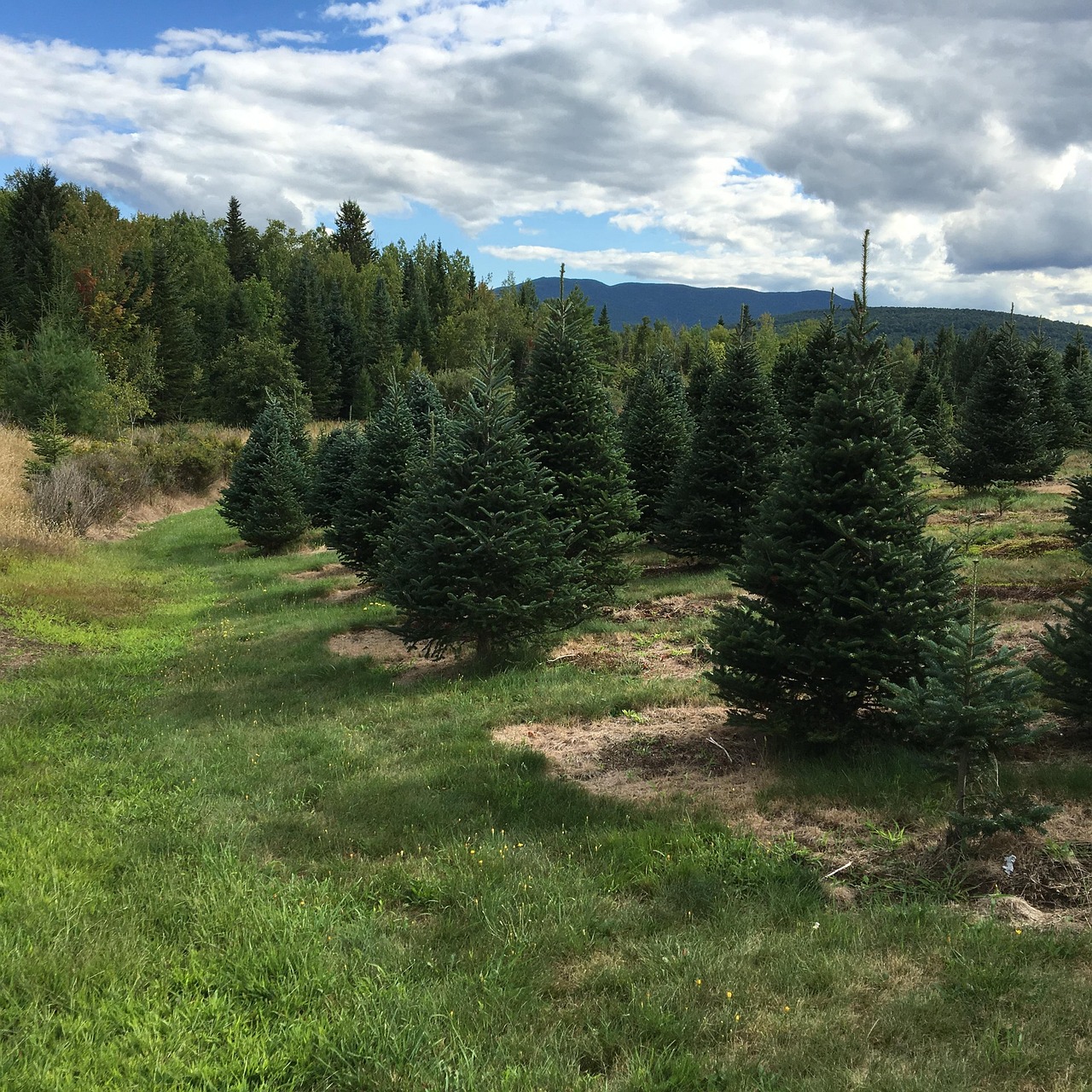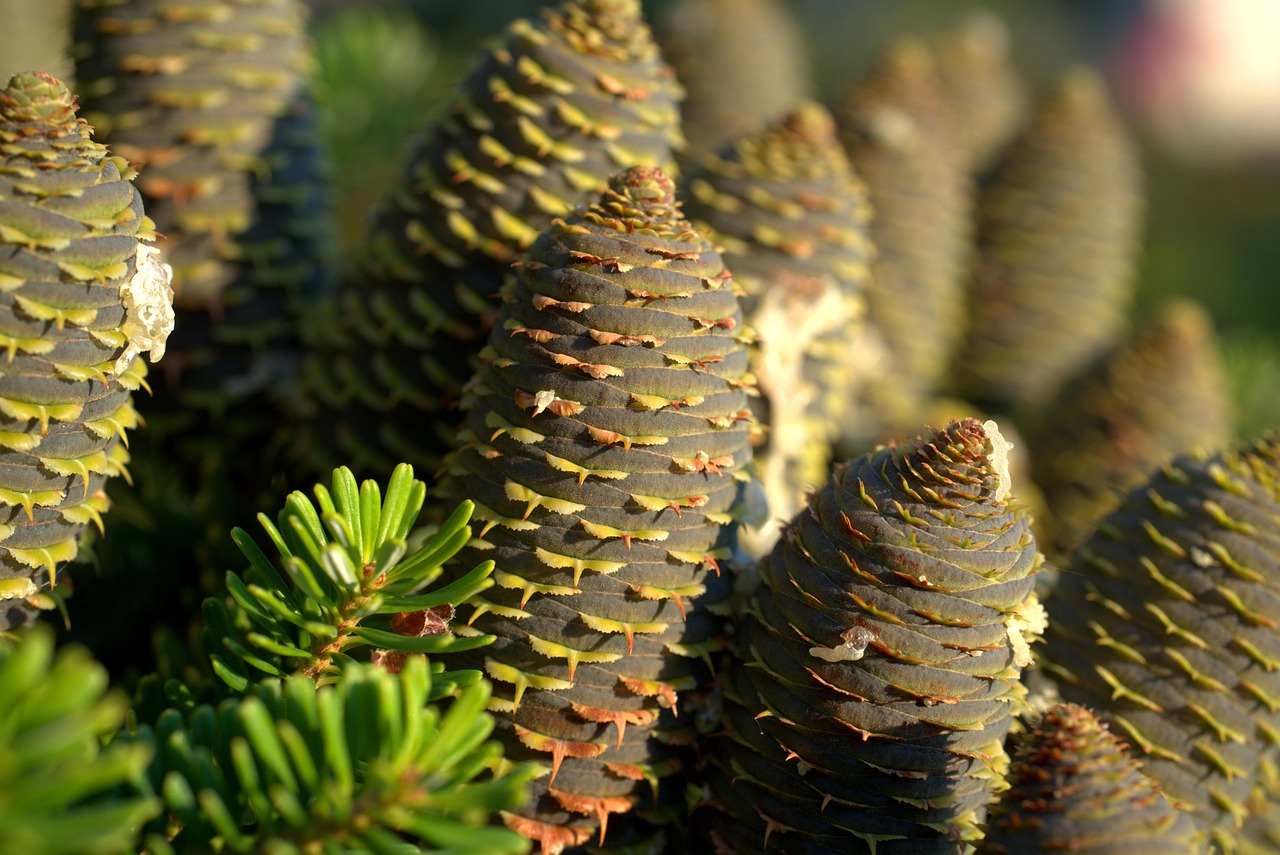Balsam fir trees are generally not considered harmful to pets. However, ingestion of any part of the tree may cause mild gastrointestinal upset in dogs and cats. It is essential for pet owners to monitor their pets around these trees.
Balsam fir trees, known scientifically as Abies balsamea, are popular ornamental and holiday trees. They are native to North America, primarily found in the northeastern United States and Canada. These trees are admired for their fragrant needles and symmetrical shape. During the holiday season, many families decorate balsam fir trees as part of their Christmas traditions.

As beloved as these trees are, pet owners often wonder about their safety. The concern arises from the fact that pets, particularly dogs and cats, are known to chew on various plants and trees. It is natural for them to explore their environment using their mouths. Therefore, understanding the potential effects of balsam fir trees on pets is crucial.
Understanding Balsam Fir Trees
Balsam fir trees can grow between 40 to 60 feet tall and have a lifespan of up to 200 years. They thrive in well-drained, acidic soils and prefer cooler climates. Balsam firs have distinct features that make them easy to identify:
- Needles: The needles are dark green and flat, measuring about 0.5 to 1 inch long.
- Cones: The cones are cylindrical, about 2 to 4 inches long, and often hang downward.
- Bark: The bark is smooth and grayish-brown, with resin blisters that give it a unique texture.
In addition to their aesthetic appeal, balsam fir trees have ecological importance. They provide habitats for various wildlife species, including birds and small mammals. Additionally, their needles release essential oils that can help purify the air, making them a popular choice for landscaping and reforestation efforts.

Potential Risks to Pets
Although balsam fir trees are not toxic to pets, there are some potential risks associated with having them around. The primary concern is related to ingestion. If a pet chews on the needles or branches, it may lead to mild digestive issues. Symptoms can include:
- Vomiting
- Diarrhea
- Lethargy
- Lack of appetite
While these symptoms are typically mild and resolve on their own, it is always wise for pet owners to consult a veterinarian if they suspect their pet has ingested any part of a balsam fir tree.
Safety Tips for Pet Owners
To ensure the safety of pets around balsam fir trees, pet owners can take several precautions:

- Keep an eye on your pets when they are near the tree.
- Discourage chewing by providing alternative safe chew toys.
- If using a balsam fir as a Christmas tree, secure it properly to prevent tipping.
- Consider placing the tree in a location that is less accessible to pets.
- Regularly clean up fallen needles and branches to minimize ingestion risks.
By following these simple safety tips, pet owners can enjoy the beauty of balsam fir trees while keeping their furry friends safe. It is crucial to remain vigilant and proactive in monitoring pet behavior around any type of foliage.
Conclusion of Section 1
This section provided an overview of balsam fir trees and their potential impact on pets. It is essential for pet owners to stay informed about what plants are safe for their animals. The next sections will delve deeper into specific concerns related to balsam fir trees and offer more detailed advice on keeping pets safe during the holiday season.
Common Misconceptions About Balsam Fir Trees and Pets
Many pet owners have concerns about the potential toxicity of various plants, including balsam fir trees. There are several misconceptions regarding the safety of these trees for pets. Understanding the facts can help alleviate unnecessary worries.

Balsam Fir and Toxicity
One common myth is that all coniferous trees are toxic to pets. This belief can lead to the assumption that balsam firs pose a significant health risk. In reality, balsam fir trees are considered non-toxic. The American Society for the Prevention of Cruelty to Animals (ASPCA) lists balsam fir as safe for pets. However, as mentioned earlier, ingestion can lead to minor gastrointestinal issues.
The Role of Essential Oils
Balsam fir trees release aromatic compounds, including essential oils. These oils are often associated with holiday scents and can be found in many products like candles and air fresheners. Some pet owners worry that these essential oils might be harmful.
While essential oils can be toxic to some pets, the concentration found in balsam fir trees is typically low. Nevertheless, it is wise to avoid using concentrated essential oils derived from balsam fir around pets. Always ensure proper ventilation if using any scented products in your home.
Signs of Distress in Pets
If a pet does ingest parts of a balsam fir tree, it is important to recognize the signs of distress. Common symptoms to watch for include:
- Vomiting
- Diarrhea
- Abdominal pain or discomfort
- Excessive drooling
- Changes in behavior, such as lethargy or loss of appetite
If any of these symptoms occur after a pet has been around a balsam fir tree, it is essential to contact a veterinarian for advice. Early intervention can help prevent complications.
Comparing Balsam Fir Trees with Other Christmas Trees
When considering Christmas tree options, many people wonder how balsam firs compare to other popular species like pines and spruce. Below is a table that outlines key characteristics of these three types of trees:
| Tree Type | Needle Characteristics | Fragrance | Toxicity to Pets |
|---|---|---|---|
| Balsam Fir | Flat, dark green needles | Strong, pleasant aroma | Non-toxic |
| Norway Spruce | Short, sharp needles | Less fragrant than balsam fir | Non-toxic but may cause mild digestive upset |
| Ponderosa Pine | Long, soft needles | Sweet, resinous scent | Non-toxic but ingestion can lead to discomfort |
This comparison shows that while all three tree types are generally safe for pets, owners should still exercise caution. Each tree has its own unique characteristics that may affect how pets interact with them.
Caring for Your Balsam Fir Tree
Caring for a balsam fir tree, whether it’s a holiday decoration or part of your landscape, involves several key practices to ensure its health and safety.
- Watering: Keep the tree well-watered if it is indoors as a Christmas tree. A fresh cut at the base will help the tree absorb water effectively.
- Pest Control: Monitor for pests that may be attracted to the tree. Use pet-safe pest control methods if necessary.
- Avoid Chemical Treatments: Avoid using chemical fertilizers or pesticides that could harm pets who might come into contact with the tree.
- Cleanup: Regularly remove fallen needles and branches to prevent ingestion and maintain cleanliness.
- Placement: Position the tree where pets cannot easily access it but still enjoy its beauty.
By taking these steps, pet owners can help ensure that their balsam fir tree remains a safe and enjoyable addition to their home or yard.
Pet Behavior Around Balsam Fir Trees
Understanding how pets behave around balsam fir trees can help owners prevent potential issues. Pets, especially dogs and cats, often exhibit curiosity toward new additions in their environment. This section will explore common behaviors and how to manage them effectively.
Curiosity and Exploration
Pets are naturally curious creatures. When introduced to a balsam fir tree, they may sniff, scratch, or even chew on it. This behavior is particularly common in young animals who are still learning about their surroundings. It is essential for pet owners to recognize that this exploration is normal but can lead to accidental ingestion of tree parts.
Chewing and Clawing
Chewing on tree branches or needles can result in mild gastrointestinal upset. To discourage this behavior, owners can implement several strategies:
- Provide Alternatives: Offer safe chew toys or treats that can satisfy your pet’s chewing instinct.
- Use Deterrents: Consider using pet-safe deterrent sprays on the tree to make it less appealing to chew.
- Supervise: Keep a close watch on pets when they are near the tree, especially during the initial days of introduction.
Seasonal Considerations for Pet Owners
The holiday season brings about unique challenges for pet owners with balsam fir trees. It is vital to address these seasonal considerations to ensure a safe environment for both pets and families.
Decorating the Tree
When decorating a balsam fir tree, pet owners should be cautious about the types of ornaments and decorations used. Some decorations can pose choking hazards or may be harmful if ingested.
- Avoid Breakable Ornaments: Choose shatterproof ornaments to reduce the risk of injury if they fall.
- Secure Decorations: Ensure ornaments are securely attached to branches to prevent them from being knocked off by playful pets.
- Limit Tinsel and Ribbon: These items can be particularly dangerous if ingested, as they can cause intestinal blockages.
Tree Stability and Safety
A balsam fir tree should be stable enough to withstand curious pets. Here are a few tips to enhance stability:
- Use a Heavy Base: Ensure the tree stand is heavy and secure to prevent tipping.
- Anchor the Tree: Consider using fishing line or other support to anchor the tree to a wall or ceiling for added stability.
- Limit Access: Create a barrier around the tree if necessary, especially if you have a particularly rambunctious pet.
Traveling with Pets During the Holiday Season
The holiday season often involves traveling, whether for family gatherings or vacations. If you plan to take your pet along, consider how this affects your balsam fir tree plans.
Leaving Pets at Home
If leaving your pet at home while you travel, ensure they are in a safe environment. Consider the following:
- Pet-Sitter: Hire a trusted pet-sitter to check in on your pet regularly.
- Safe Space: Create a comfortable space with food, water, and toys for your pet while you are away.
- Transporting Plants: If you have a live balsam fir, ensure it is placed securely in your vehicle during transport.
Taking Pets Along
If you decide to take your pet with you during holiday travels, preparation is key:
- Packing Essentials: Bring food, water, medications, and familiar items for your pet.
- Plan Stops: Schedule regular breaks during travel for bathroom and exercise needs.
- Pet-Friendly Accommodations: Research and book places that welcome pets ahead of time.
Caring for a balsam fir tree while ensuring the safety of your pets requires attention and planning. By being proactive about your pet’s behavior and taking necessary precautions during the holiday season, you can enjoy the beauty of these trees without worry.
Final Considerations for Pet Owners
As the holiday season approaches, many families choose to bring a balsam fir tree into their homes. While these trees can enhance the festive atmosphere, it is essential for pet owners to remain vigilant regarding the safety of their furry companions. Understanding both the benefits and potential risks associated with balsam fir trees can help ensure a harmonious environment.
One important aspect to keep in mind is that each pet is unique in its behavior and health. Some pets may show no interest in the tree, while others might be more curious or mischievous. Therefore, monitoring individual behaviors is crucial. If you notice any signs of distress or unusual behavior after your pet interacts with the tree, it is advisable to consult your veterinarian immediately.
Healthy Alternatives to Balsam Fir Trees
If you are concerned about bringing a balsam fir tree into your home, or if your pet has a history of chewing on plants, consider some alternative options:
- Artificial Trees: These trees can provide the same aesthetic appeal without the risk of ingestion or allergies associated with real trees.
- Potted Plants: Small potted plants or other types of decorations can create a festive environment without the hazards of larger trees.
- Pet-Friendly Decorations: Use decorations made from non-toxic materials that are safe for pets, ensuring they can enjoy the holiday spirit without harm.
Educating Family and Guests
During holiday gatherings, it is crucial to educate family members and guests about pet safety around balsam fir trees. Here are some points to share:
- Instruct guests not to feed pets table scraps or holiday treats that may be harmful.
- Remind everyone to keep doors and gates closed to prevent pets from escaping when guests arrive or leave.
- Encourage visitors to respect boundaries set for pets, especially around the tree area.
By fostering awareness among family members and friends, you create a safer environment for pets while enjoying holiday festivities.
Conclusion
In summary, balsam fir trees are generally considered safe for pets, with mild gastrointestinal upset being the primary concern if parts of the tree are ingested. By taking preventative measures, including monitoring pet behavior and employing safety strategies during the holiday season, pet owners can enjoy the beauty of these trees without worry. Understanding the unique characteristics of balsam firs and how they interact with pets is essential for creating a safe and festive atmosphere at home.
As always, if there are any concerns regarding your pet’s health or behavior around a balsam fir tree, do not hesitate to reach out to your veterinarian for guidance. With careful planning and consideration, families can celebrate the holidays while ensuring the well-being of their beloved pets.
